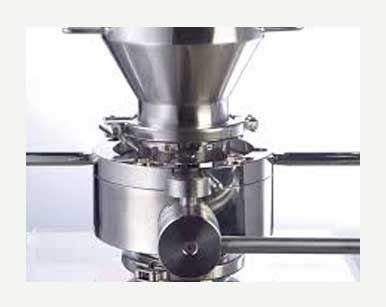


The Split Butterfly Valves offer a safer handling of non-sterile bio-pharma and other chemical ingredients offering the highest levels of containment performance.
High containment performance with no additional seals, vacuum and extraction required. This entry level valve offers a simple, cost effective upgrade to facilitate the GMP and containment requirements in manufacturing. The minimum part design is easy to operate, clean and maintain whilst providing outstanding entry level performance.
Split butterfly valves / Contained powder handling valves and docking systems consist of two Assembly - Active half and the passive half. Generally, the active half will be mated to the receiving vessel or process machine, with the passive half commonly mounted to the discharging drum or similar. Split Butterfly Valve For Pharma Containment Application , Contained powder handling valves and docking systems,
Split Butterfly Valve use for charging and discharging highly potent APIs , Reactor Charging, Extruder Charging , Powder Filling Lines ,Tablet Press Charging , Tablet Coater Charging , Blenders/Mixer , Filter Dryers , Tablet Packing Lines Split Butterfly Valves with light and heavy duty both.
DN 50, DN 100, DN 150, DN 200, DN 250
Split butterfly valves provides a safe method of transferring product from one container or process vessel to another whilst minimizing the levels , split butterfly valve system for emptying and filling your highly potent or toxic media material transfer .

An economic upgrade to higher performance as a retrofit to existing installations or as a modular unit in facilities. This extraction ring device comprises of a circular plenum arrangement which couples to the active unit and is connected to an extraction source. During the operation process the extraction process is run to ensure that any airborne particulate is safely taken into the extracted air stream.

Advanced performance to low nanogram levels in a compact efficient split valve. It incorporates purge and extract connections to the Active Unit. During the undocking step a sealed gap is created between the Active and Passive interface. A purge and extraction process is run to remove traces of particles that can potentially become airborne once the valve is fully undocked.
